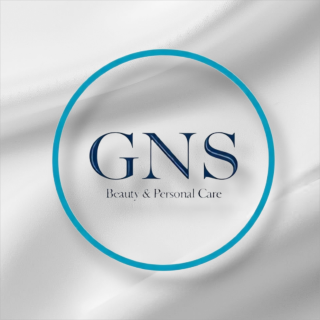Adult acne catches many people off guard and it is not just a relic of your teenage years. Up to 22 percent of adult women and 12 percent of adult men still battle breakouts after age 25. You might think adult acne looks and acts the same as what you had in school but the truth is it is a completely different beast beneath the surface.
Table of Contents
- What Is Adult Acne And Why Does It Occur?
- The Science Behind Adult Acne: Causes And Contributing Factors
- Understanding The Impact Of Lifestyle On Adult Acne
- Exploring Treatment Options: How They Work And Their Benefits
- The Role Of Skincare Ingredients In Adult Acne Management
Quick Summary
| Takeaway | Explanation |
|---|---|
| Understand hormonal triggers of adult acne | Hormonal fluctuations, especially in women, increase oil production leading to acne. |
| Identify lifestyle factors that exacerbate acne | Stress, diet, and skincare choices directly impact acne severity and skin health. |
| Utilize targeted topical treatments | Medications like retinoids and antimicrobials can effectively reduce acne-causing processes. |
| Incorporate anti-inflammatory foods into diet | A diet low in refined sugars and dairy supports skin health and may reduce breakouts. |
| Choose effective skincare ingredients | Ingredients like alpha-hydroxy acids and linoleic acid help manage sebum and inflammation. |
What is Adult Acne and Why Does It Occur?
Adult acne is a persistent and frustrating skin condition that affects individuals beyond their teenage years, challenging the common misconception that acne is exclusively a teenage problem. Unlike adolescent breakouts, adult acne presents unique characteristics and triggers that require specialized understanding and treatment approaches.
Understanding the Biology of Adult Acne
At its core, adult acne emerges from complex interactions between multiple physiological factors. Hormonal fluctuations play a critical role, particularly among women experiencing menstrual cycles, pregnancy, or menopausal transitions. These hormonal shifts can stimulate sebaceous glands to produce excess oil, creating an environment conducive to bacterial growth and inflammation.
The pathogenesis of adult acne involves several key mechanisms:
- Hormonal Imbalances: Elevated androgen levels increase sebum production
- Bacterial Proliferation: Cutibacterium acnes bacteria thrive in oil-rich environments
- Inflammatory Responses: Immune system reactions contribute to persistent skin eruptions
Identifying Primary Triggers
Multiple external and internal factors contribute to adult acne development. According to research from the National Institutes of Health, key triggers include chronic stress, dietary patterns, genetic predispositions, and environmental exposures. Stress, in particular, generates cortisol and other hormones that can exacerbate skin inflammation and disrupt normal sebum regulation.

Individuals experiencing adult acne often notice distinct characteristics:
- Concentrated breakouts along the lower face and jawline
- Deeper, more painful inflammatory lesions
- Longer healing times compared to teenage acne
- Higher likelihood of persistent scarring
Recognizing these nuanced differences empowers individuals to seek targeted treatments that address the underlying causes of their specific acne manifestation, moving beyond generic skincare approaches toward personalized solutions.
Below is a comparison table summarizing the key differences between adolescent and adult acne, helping readers understand why adult acne requires a specialized approach.
| Characteristic | Adolescent Acne | Adult Acne |
|---|---|---|
| Typical Age Range | 12-18 years | 25+ years |
| Location | Forehead, nose, cheeks | Lower face, jawline |
| Lesion Depth | More superficial (whiteheads/blackheads) | Deeper, more painful lesions |
| Healing Time | Faster | Slower |
| Trigger Complexity | Largely hormonal | Hormonal, stress, diet, environment |
| Scarring Tendency | Less likely | More likely |
| Treatment Approach | Generalized, over-the-counter | Personalized, targeted |
The Science Behind Adult Acne: Causes and Contributing Factors
Understanding adult acne requires a comprehensive exploration of the intricate biological and environmental mechanisms that trigger skin inflammation and sebum production. Far from being a simple surface-level concern, adult acne represents a complex interplay of internal physiological processes and external influences.
Hormonal Dynamics and Skin Inflammation
Hormonal fluctuations serve as a primary driver of adult acne, particularly among women. Androgens, specifically testosterone and its derivatives, stimulate sebaceous glands to increase oil production. These hormonal shifts can occur during menstrual cycles, pregnancy, perimenopause, and in response to conditions like polycystic ovary syndrome (PCOS).
Key hormonal interactions include:
- Androgen Sensitivity: Some individuals have heightened sebaceous gland responses to hormonal changes
- Cortisol Impact: Stress hormones can further amplify inflammatory skin responses
- Insulin Resistance: Metabolic disruptions can trigger increased androgen production
Genetic and Environmental Intersections
According to research from the Journal of Clinical and Aesthetic Dermatology, adult acne emerges from a complex interaction between genetic predispositions and environmental triggers. Genetic factors determine an individual’s inherent susceptibility to acne, while external elements like diet, stress, and skincare habits can either mitigate or exacerbate skin inflammation.
Significant environmental contributors include:
- Dietary patterns high in refined sugars and dairy
- Chronic psychological stress
- Exposure to pollution and environmental toxins
- Use of comedogenic skincare and makeup products
The intricate relationship between these factors demonstrates that adult acne is not a singular, simplistic condition but a nuanced manifestation of multiple physiological and lifestyle influences. By understanding these complex interactions, individuals can develop more targeted and personalized approaches to managing their skin health.
This table outlines the primary factors contributing to adult acne, providing a clear overview of internal and external influences discussed in the article.
| Factor | Description | Example/Impact |
|---|---|---|
| Hormonal Changes | Fluctuations in androgens, menstrual cycles, etc. | Increases sebum production |
| Stress | Chronic psychological pressure | Triggers cortisol, amplifies inflammation |
| Genetics | Inherited susceptibility to acne | Predisposes to persistent breakouts |
| Diet | High-glycemic, dairy-rich, or processed foods | Promotes inflammation and hormonal imbalance |
| Environmental | Pollution, toxins, comedogenic products | Irritates skin, blocks pores |
| Skincare Habits | Use of unsuitable or comedogenic products | Can worsen acne or delay healing |
Understanding the Impact of Lifestyle on Adult Acne
Lifestyle factors play a profound and often underestimated role in adult acne development, extending far beyond genetic predispositions. Modern living conditions create a complex environment that can significantly influence skin health, making lifestyle management a critical component of effective acne treatment.
Stress and Skin Health Correlation
Psychological stress emerges as a primary lifestyle factor directly impacting skin inflammation and acne severity. According to research on adult acne patients, stress triggers physiological responses that dramatically alter skin condition. When individuals experience chronic stress, their body releases cortisol and pro-inflammatory hormones that stimulate sebaceous glands and disrupt normal skin barrier functions.
Key stress-related skin disruptions include:
- Hormonal Cascades: Increased cortisol production
- Immune System Modifications: Enhanced inflammatory responses
- Sebum Production Alterations: Heightened oil secretion
Dietary Influences on Skin Condition
Nutrition plays a significant role in skin health, with certain dietary patterns demonstrably linked to acne development. Consuming high-glycemic foods, dairy products, and processed ingredients can trigger inflammatory responses and hormonal imbalances that manifest through skin eruptions.
Critical dietary considerations for adult acne management:
- Limit refined sugar and processed carbohydrate intake
- Reduce dairy consumption
- Increase consumption of anti-inflammatory foods
- Stay adequately hydrated
Beyond diet and stress, additional lifestyle factors such as sleep patterns, environmental exposures, and skincare routines collectively contribute to skin health. Understanding these interconnected elements empowers individuals to develop holistic approaches that address acne from multiple perspectives, recognizing that effective management requires a comprehensive lifestyle strategy.
Here’s a summary table outlining how various lifestyle and dietary factors influence adult acne, serving as a quick reference for modifiable risk factors and their effects.
| Lifestyle Factor | Effect on Skin/Acne | Suggested Action |
|---|---|---|
| Stress | Increases inflammation & oiliness | Practice stress management techniques |
| High sugar intake | Promotes inflammation/hormone swing | Reduce refined sugar, processed foods |
| Dairy consumption | May exacerbate hormonal imbalance | Limit or avoid dairy products |
| Hydration | Supports skin barrier health | Drink adequate water daily |
| Skincare routines | Can worsen or improve acne | Use non-comedogenic, gentle products |
| Sleep patterns | Poor sleep can hinder healing | Maintain regular, restful sleep |
Exploring Treatment Options: How They Work and Their Benefits
Treating adult acne requires a nuanced and personalized approach that addresses the complex underlying mechanisms of skin inflammation. The landscape of acne treatments has evolved significantly, offering a diverse range of therapeutic strategies designed to target different aspects of skin health and acne development.
Topical Treatment Strategies
Topical treatments form the cornerstone of adult acne management, providing direct intervention at the skin surface. These medications work by addressing multiple pathological processes simultaneously, including reducing inflammation, controlling bacterial growth, and normalizing skin cell turnover.
Key topical treatment mechanisms include:
- Retinoid Actions: Normalize skin cell shedding and reduce comedone formation
- Antimicrobial Effects: Reduce Cutibacterium acnes bacterial populations
- Anti-inflammatory Compounds: Decrease localized skin inflammation
Systemic and Advanced Treatment Approaches
According to comprehensive research on acne management strategies, systemic treatments offer more comprehensive interventions for moderate to severe adult acne. These approaches extend beyond surface-level treatments, addressing internal factors that contribute to persistent skin inflammation.
Advanced treatment modalities encompass:
- Oral antibiotics targeting bacterial colonization
- Hormonal therapies for women with androgen-related acne
- Isotretinoin for severe, treatment-resistant cases
- Innovative procedural interventions like laser therapy
The evolving understanding of acne pathogenesis has revolutionized treatment paradigms. Modern approaches recognize that effective management requires a holistic strategy addressing biological, environmental, and individual variations. By combining targeted treatments with lifestyle modifications, individuals can develop personalized interventions that not only manage current symptoms but also prevent future breakouts.
The following table breaks down common treatment options for adult acne, highlighting their methods of action and primary benefits to aid decision-making.
| Treatment Type | How It Works | Example/Notes |
|---|---|---|
| Topical Retinoids | Normalize cell turnover, unclog pores | Effective for mild-moderate acne |
| Antimicrobials | Reduce acne-causing bacteria (C. acnes) | Used alone or with other agents |
| Anti-inflammatories | Decrease skin inflammation | Reduce redness, swelling |
| Oral Antibiotics | Lower systemic bacterial load | Reserved for moderate to severe cases |
| Hormonal Therapy | Regulates hormone-related breakouts | For women (e.g., contraceptives, antiandrogens) |
| Isotretinoin | Reduces oil, inflammation, bacteria | Often for severe or treatment-resistant acne |
| Procedural Therapies | Target acne with devices/lasers | Considered for scarring or persistent cases |
The Role of Skincare Ingredients in Adult Acne Management
Skincare ingredients represent sophisticated molecular tools designed to address the complex physiological mechanisms underlying adult acne. Far from being simple cosmetic solutions, these scientifically formulated compounds interact directly with skin biology to mitigate inflammation, regulate sebum production, and restore dermal balance.
Targeted Molecular Interventions
Modern skincare ingredients function through precise biological mechanisms that interrupt acne formation pathways. By understanding the specific interactions between chemical compounds and skin cellular processes, individuals can select treatments that address root causes rather than merely masking symptoms.
Key molecular intervention strategies include:
- Sebum Regulation: Ingredients that normalize oil production
- Bacterial Control: Compounds targeting microbial proliferation
- Inflammation Reduction: Ingredients with anti-inflammatory properties
Strategic Ingredient Selection
According to international expert research on dermocosmetic interventions, certain skincare ingredients demonstrate remarkable efficacy in managing adult acne. These compounds work through complex interactions with skin biology, offering targeted approaches to disrupting acne development mechanisms.
Critical ingredients for comprehensive acne management:
- Alpha-hydroxy acids for cellular turnover
- Linoleic acid to reduce comedone formation
- Salix alba extract for natural anti-inflammatory effects
- Lactobacillus for microbiome balance
The evolution of skincare science reveals that effective acne management transcends traditional treatment paradigms. By selecting ingredients that interact intelligently with skin biology, individuals can develop personalized strategies that address the multifaceted nature of adult acne, transforming skincare from reactive treatment to proactive management.

Transform Your Adult Acne Journey with GNS Beauty’s Holistic Solutions
Adult acne can leave you feeling frustrated when every product seems to miss the mark. This article highlighted how unique triggers like hormones, stress, and environmental factors often mean your skin needs more than a one-size-fits-all routine. At GNS Beauty & Personal Care, we recognize that deep-seated issues like persistent inflammation and sebum imbalance require targeted, premium solutions. Our curated collection blends science-backed skincare ingredients with eco-conscious formulas to address the root causes of adult breakouts, not just the symptoms.

Take back control of your skin with products crafted for wellness-savvy adults like you. Discover our wide selection of advanced skin treatments and personal care essentials all designed to support your confidence and natural beauty. You deserve visible changes and lasting results. Visit GNS Beauty & Personal Care now and find the best products for your self-care journey. Your clear skin transformation starts here—explore our latest releases and embrace a routine that actually works.
Frequently Asked Questions
What causes adult acne?
Adult acne is primarily caused by hormonal fluctuations, which can increase oil production and trigger skin inflammation. Other significant factors include stress, dietary choices, genetic predispositions, and environmental exposures.
How can stress affect my skin and contribute to adult acne?
Chronic stress leads to increased cortisol levels, which can amplify skin inflammation and disrupt the normal function of sebaceous glands, resulting in heightened oil production and acne severity.
What are some effective topical treatments for adult acne?
Effective topical treatments for adult acne include retinoids that normalize skin cell turnover, antimicrobial agents that reduce bacteria, and anti-inflammatory compounds that decrease localized inflammation. These treatments directly target the underlying causes of acne.
How do dietary choices influence adult acne?
Dietary choices, particularly high-glycemic foods and dairy products, can trigger inflammatory responses and hormonal imbalances that contribute to acne development. It’s beneficial to limit refined sugars and processed carbohydrates while increasing the intake of anti-inflammatory foods.








Hinterlasse einen Kommentar
Alle Kommentare werden vor der Veröffentlichung geprüft.
Diese Website ist durch hCaptcha geschützt und es gelten die allgemeinen Geschäftsbedingungen und Datenschutzbestimmungen von hCaptcha.